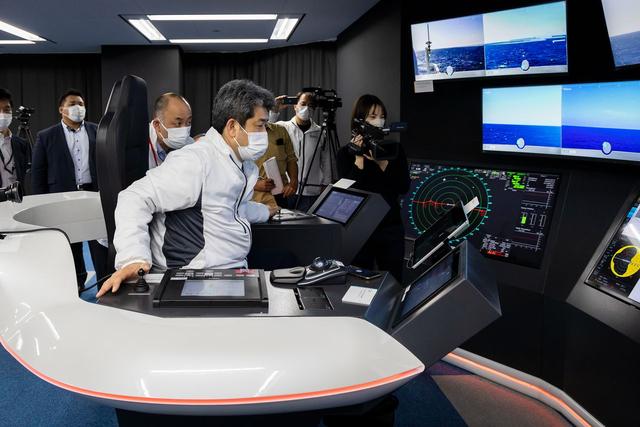Tokyo Bay successfully realized unmanned shipping of container ships for the first time: long-distance operation on land was also carried out about 300 kilometers away.
Toshihiro Noshinori (com, Japanese dots)
Remote operation of ships by land support centers
In Tokyo Bay, one of the few congested areas in the world, there are as many as 500 ships a day, the first successful unmanned container ship. The proportion of seaborne in Japan's trade is more than 99% on a weight basis, but the aging of seafarers and the shortage of labor force have become a problem, and we look forward to the practicality of early unmanned ships.

The unmanned voyage in Tokyo Bay was successful and returned to the port smoothly.
On March 1, the Japanese consortium announced that the unmanned container ship had been proved successful on the 790 km round-trip route between Tokyo Port and Jin Matsuzaka Port (Mitsubishi Prefecture). It is reported that independent navigation in the "crowded (crowded) waters" between most ships such as Tokyo Bay is the first attempt in the world. The empirical experiment is part of the unmanned ship project "MEGURI 2040" promoted by the Japanese consortium, which is carried out by the "DFFAS (Designing The Future Of Full Autonomous Ship) consortium" of 30 domestic companies of the Japan Shipping Group with Japanese marine science as the center. In addition to shipping and shipping related companies, it also brings together the technology and know-how of various enterprises, such as NTT Group, Meteorological Information Company, Marine Insurance and so on.
Hiding 400-500 ships unmanned.
The number of ships sailing in Tokyo Bay rises to about 500 a day, 1.5 times the size of the Singapore Strait of Malacca and more than 10 times that of the Panama Canal. A container ship with a total length of 95 meters and a total tonnage of 749 tons is used in the experiment. Most of the large ships have automatic steering devices along the predetermined route, but the unmanned ship also has the function of avoiding the autonomous avoidance and automatic departure of other ships appearing in the upward course. On the afternoon of February 26th, the Expo successfully landed at the port of Tokyo. It takes about 20 hours to sail across Tokyo Bay to the port of Jinmatsuzaka and arrive at the port of Tokyo again on the morning of March 1. Although there are also scenes of temporarily switching to manual operation, the operation rate of the unmanned navigation system reached 97.4% on the last trip and 99.7% on the return journey. Sang Yuan Wu, director of the DFFAS consortium, said: "the number of trips alone has reached 107. Since multiple ships can be avoided by changing the route at one time, it can be estimated that the cumulative number has reached 400,500. "he felt his reaction. The unmanned shipping system ships the whole set of servers and monitoring equipment into containers on land and installs them on dark ships. If this method is introduced, the existing ship can be upgraded to an unmanned ship without large-scale transformation.
次ページは:遠隔操船可能な陸上支援センター最終更新:nippon.com